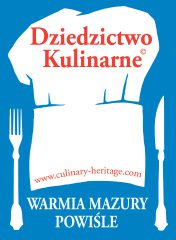MAZURIAN WEALTH OF CULINARY
MAZURIAN WEALTH OF CULINARY
Contrary to popular opinion, the cuisine of Warmia and Mazury is not greasy and salty. Scientists from Olsztyn confirm the thesis that the traditional cuisine of Masuria was only slightly more caloric than the dishes of other regions, and this was only due to the higher demand for calories due to the hard work in fields and farms.
In the past, rich breakfasts were eaten, which were to give energy for the whole hard working day, and in the late afternoon, dinner, equally full, but rich in vegetables and groats. Meats were usually eaten on Sundays and on public holidays. However, although it seems that such a simple kitchen could not leave any legacy – it is a mistake. We have a lot to be proud of. Masurians were famous for herbs that they spared in their dishes, soups full of the taste of lake fish or pancakes with fruit straight from the forest. The inhabitants of the region were able to create dishes that, despite their simplicity, created a wonderful feast for the palate.
Masurian cuisine hides unusual combinations of flavors and unusual products.
Few people know, for example, that hazel flowers, which can be felt by allergy sufferers since early spring, taste great when fried in butter. Like the elderberry flowers, which are abundant in old farms or along dirt roads.
The richness of meadows was and still is a delight for true connoisseurs of traditional cuisine and medicine. Coltsfoot, yarrow, dandelion and chamomile were not only / and are still / used in the treatment of all types of ailments, but also found application in Masurian cuisine. Anyone who does not know the taste of dandelion honey – popularly known as dandelion – does not know the true taste of a Masurian meadow!
To a large extent, the real, traditional cuisine of Masuria changed immediately after 1945, when the native inhabitants left for Germany. The new settlers brought with them an influx of recipes and habits from other regions, both Poland and abroad.
What has survived to this day from the pre-war times is our heritage that cannot be lost.
Native Masurians are particularly fond of potatoes, fish, dairy products consumed in many forms, and rich soups, the main ingredient of which was cabbage.
From the very beginning of the uprising, Mikołajki was the leader in fishing. No wonder that fish dominated the menu of the inhabitants and the surrounding area. Fried, boiled, baked, pickled in vinegar, salted and smoked – they are suitable for all possible cooking techniques. Nobody but Mazurians can make fish soup, which is probably the most recognizable dish in this region of Poland. Of course, each recipe is different, each “promotes” a different type of fish, but the most important point is to stock up on the whole fish, so selected and cooked enough time to bring out their proper flavor.
An interesting proposition that appears in the pre-war regulations is “ajntopf”. A dish where you can really include anything. The main principle of its creation is that the pot should contain a variety of ingredients – meat, vegetables, potatoes and herbs, thanks to which the whole composition of taste will be properly aromatic and satiated. An interesting fact is that the dish was invented by a German owner of a restaurant in Korsze before 1914, so this dish is still relatively young in relation to the recipes of our region.
We can list many more dishes and their recipes, but we will let some of those found centuries ago for our own kitchens and pass them only to the next young generations of restaurateurs, so that they do not disappear and lose themselves in the modern world.
Anyone who would like to see with their own eyes how regional Masurian dishes are created, can take part in culinary workshops organized in the King of Sielawy.
Our region also includes the network of “Culinary Heritage Warmia Mazury Powiśle”. This very important slogan is the focus of places marked with a sign guarded by the Marshal’s Office, which cultivate the culinary traditions of the region. These are processors, farmers, restaurants
and farms that focus on the quality and locality of products. These are not huge processing plants focused on mass production, but small manufactories from which real gems come out.
The very idea of creating a regional culinary network is connected with the “European Culinary Heritage” sign covering the area of the European Union. It contains those places on the continent’s map that in food production refer to the traditions of individual regions of European countries. This trail is a great guide for lovers of culinary tourism.
In Warmia and Mazury, there are already 136 places entered on this list. Anyone who wants to be included in the network should show that what he produces and what he feeds his guests refers to the tradition of the region and is based on natural and healthy products from Warmia and Mazury. Each restaurateur must show that what becomes the basis of their dishes to a large extent comes from the local market.

